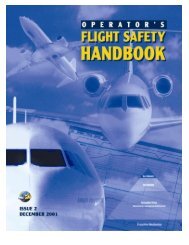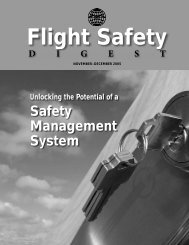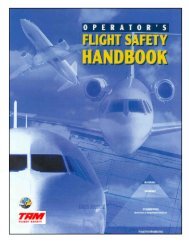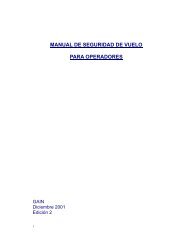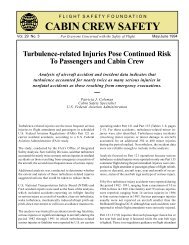Download PDF [10.9 MB] - Flight Safety Foundation
Download PDF [10.9 MB] - Flight Safety Foundation
Download PDF [10.9 MB] - Flight Safety Foundation
Create successful ePaper yourself
Turn your PDF publications into a flip-book with our unique Google optimized e-Paper software.
COVERSTORY<br />
avoid adding to pilots’ workload for routine<br />
landings, when the test was designed to focus on<br />
difficult occasions.<br />
A Pilot’s Dilemma<br />
Although it is common knowledge that wet<br />
runways may be slippery, the issue of slippery<br />
runways traditionally has been associated with<br />
winter operations and winter contaminants.<br />
FOQA for Wet and Slippery Runways Test Program<br />
FOQA data<br />
Friction-limited<br />
landings<br />
METAR for<br />
occurrence<br />
Validation<br />
of match<br />
between data,<br />
crew feedback<br />
and METAR<br />
<strong>Flight</strong> crew<br />
feedback<br />
ALPA FOQA<br />
data gatekeeper<br />
ALPA = Air Line Pilots Association, International; FOQA = flight operational quality assurance;<br />
METAR = international standard code format for hourly surface weather observations<br />
Source: Joe Vizzoni<br />
Figure 1<br />
However, recently the wet runway issue has received<br />
increased attention, and for good reason.<br />
Early in this test, program data showed that<br />
airports where runways were neither grooved<br />
nor crowned for water drainage had increasingly<br />
higher risk of being slippery when wet. Various<br />
types of deposits on the runways compounded<br />
the problem.<br />
Ideally, airport management should ascertain<br />
proper runway design and maintenance<br />
programs to ensure proper friction. In reality,<br />
this is not always the case, and the test program<br />
revealed substantial variations. A pilot’s job is<br />
to make the right decisions and land the aircraft<br />
safely given the prevailing conditions. Therefore<br />
knowledge of, and access to, crucial information<br />
is of utmost importance for the pilot.<br />
Test Program Findings<br />
One unexpected outcome of the test program<br />
was the finding that a few airports recurrently<br />
presented slippery conditions. The<br />
METAR analysis confirmed conditions to<br />
be rain and/or wet runways. Pilot feedback<br />
also supported the finding that conditions<br />
were slippery. Some of the pilot statements<br />
quoted earlier originate from these airports,<br />
primarily located in Central America, where<br />
the runways are typically neither grooved nor<br />
crowned. A history of overrun accidents further<br />
added to a perception of these airports<br />
being at higher risk.<br />
To conduct further in-depth analysis, the<br />
FOQA group plotted, using a global positioning<br />
system tool, the number of slippery landings<br />
on maps of the runways to enhance situational<br />
awareness of the problem. The photograph<br />
(p. 15) shows an example of one of the airports<br />
where aircraft encounter friction-limited situations.<br />
For practical purposes, the illustration<br />
only shows encounters at groundspeeds less<br />
than 70 kt. This also is the phase of the stopping<br />
run when engine reverse thrust and aerodynamic<br />
drag have less impact on the deceleration and<br />
leave most of the stopping to the wheel brakes.<br />
The photograph shows consistency and further<br />
supports the findings.<br />
14 | FLIGHT SAFETY FOUNDATION | AEROSAFETYWORLD | MAY 2013<br />
© Tim de Groot/AirTeamImages


![Download PDF [10.9 MB] - Flight Safety Foundation](https://img.yumpu.com/18550968/16/500x640/download-pdf-109-mb-flight-safety-foundation.jpg)

![Download this Issue [PDF 7 MB] - Flight Safety Foundation](https://img.yumpu.com/18859635/1/190x245/download-this-issue-pdf-7-mb-flight-safety-foundation.jpg?quality=85)
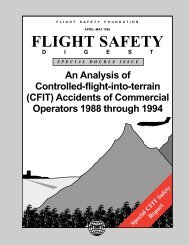
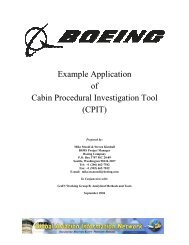
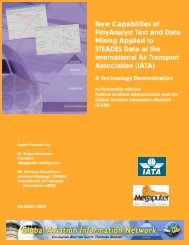
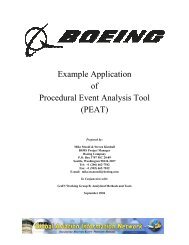
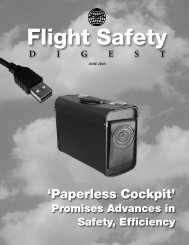
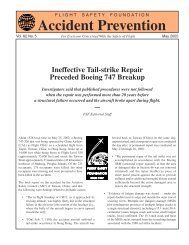
![Download [PDF 8 MB] - Flight Safety Foundation](https://img.yumpu.com/18859366/1/190x245/download-pdf-8-mb-flight-safety-foundation.jpg?quality=85)
